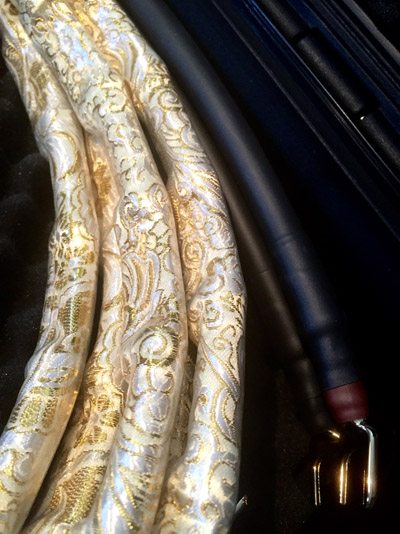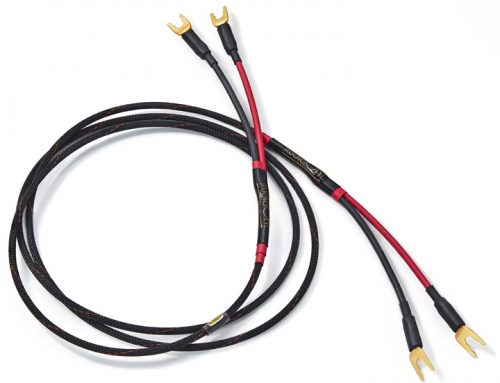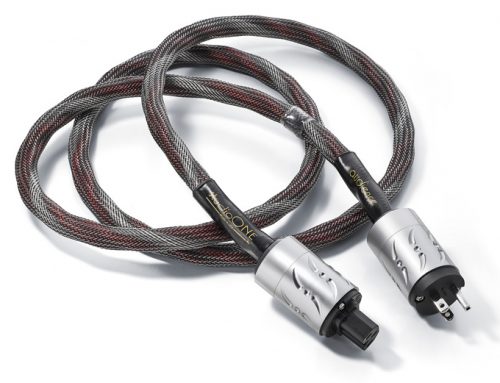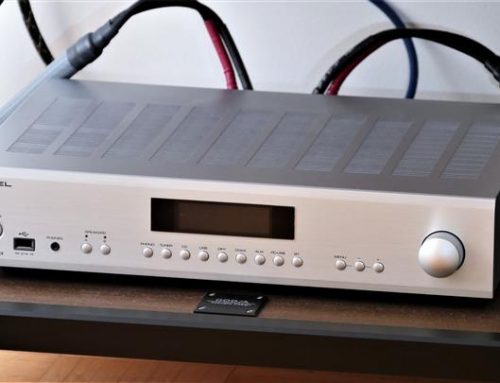 In the three and a half decades that I have been reviewing audio products, I have had the privilege of living through the 1980s when Noel Lee the founder of Monster Cables began his intrepid quest to get audio cables the respect they deserve. Initially, Noel’s products were regarded as snake oil to the ‘wire is wire’ crowd who believed that a lamp cord was good enough for speaker cabling and anyone paying more needs to get their head examined.
In the three and a half decades that I have been reviewing audio products, I have had the privilege of living through the 1980s when Noel Lee the founder of Monster Cables began his intrepid quest to get audio cables the respect they deserve. Initially, Noel’s products were regarded as snake oil to the ‘wire is wire’ crowd who believed that a lamp cord was good enough for speaker cabling and anyone paying more needs to get their head examined.
I watched with interest as ever more audiophiles gradually warmed up to the idea that cables mattered. This prompted a plethora of companies getting into this business, introducing cables with ever higher price points to a stage where it got patently ridiculous. At this point I found myself preferring to tune out rather than listen to the gobbledygook being spewed out by some companies to try and convince consumers that their cables were worth the price of a new automobile.
Then something happened that changed all that. I was contacted by Knut Skogrand, a true blue Norwegian Viking who very politely requested me to audition his uber expensive cables. What struck me was that he did not indulge in any sales talk or complicated technical rationale, which I found to be truly refreshing. His only request was that I gave his cables a listen. I did a bit of research and found a few things that peaked my interest. Apparently Knut handcrafted his cables in a remote mountain cabin turned workshop, right in the middle of nowhere in a magnificently desolated part of the land of the midnight sun, surrounded by rolling hills and lush verdant forests teeming with flora and fauna. “Now that is so different,” I thought to myself, “it must be worth investigating”. And so I consented to giving the cables an audition. A package duly arrived a few weeks later in an impressive flight case that nestled the beautiful looking cables not unlike the way a jewel box cradles a fine diamond necklace.
I began the process of breaking in the speaker cables for a hundred hours before the audition and during that time I exchanged a few emails with Knut to better understand the man behind the cables. Knut turned out to be a musician. He started learning to play the piano from the age of seven and he played in various bands over a couple of decades, trying his hand not just on the ivories but also with a bass guitar and with drums. He has also written music, including a few movie scores. He credits his Lutheran pastor father for instilling in him a love of music. He remembers sitting on his father’s lap listening to classical music while being indoctrinated in the art of listening to the intent of the composer by paying particular attention to the phrasing, tempo and dynamics of the track. He also remembers his mother dancing around the living room with so much joie de vivre which revealed to him early on, the incredible impact that music could have on one’s very soul.
Knut’s tryst with cables occurred when he was 14. He recalls his frustration when during the process of mixing tracks, no cable he tried was able to portray exactly what he put into his musical compositions. He was particularly peeved at the way every cable he tried adversely impacted the dynamics and added very audible colouration and other forms of distortion to the music. He found that many other musicians that he met were experiencing the same frustrations and this prompted him to begin his journey to seek and hopefully find cable nirvana. His goal was to design cables that would totally get out of the way of the music and he recalls lying awake at night, juggling ideas and then trying them out to see if they worked. The process was not exactly cheap, so he sought and received funding from the Norwegian Government, which exponentially helped his ambitious quest.
One of the fundamental problems confronting cables is the gross impedance mismatch between the conductor (wire) and the dielectric (insulating jacket encasing the conductor). As current flows through a wire it creates a magnetic field around it that expands and contracts, permeating through the dielectric. The dielectric absorbs some of the magnetic energy and then re-releases it back into the conductor later. This effect is called time smearing and it distorts the signal by disorienting the sound stage, diminishing dynamics and sucking the life out of the music. The higher the dielectric constant of the insulating material, the more adversely it effects the flow of the music signal so obviously, the lower the dielectric constant, the better it is for cable performance.
The more common dielectrics used in audio cables have relatively high dielectric constants. For example polypropylene has a constant of around 2.2 to 2.6 while for Teflon it is in the region of 2.1 and PVC comes in at approximately 3.5. Knut’s solution was to use the clean and dry Norwegian mountain air as a dielectric. The solid core wires float in this air from one end of the cable to the other to achieve an effective dielectric constant of 1.00059. How he achieves this is his trade secret but what he does reveal is that, depending on the model, his handmade cables achieve more than a 99.28% air dielectric in comparison to what he claims, is the next best available (albeit machine made) cable that achieves an approximate 80% air dielectric.
With his flagship Beethoven Cables, Knut employs a PFA inner framework because it results in less stored static charge, a bit more flexibility and better impact strength that is 4.45 times stronger than the PTFE frameworks that he uses for his more affordable Vivaldi, Ravel and Tchaikovsky cables.
Another barrier to cable performance is the nature of the material used as the conductor. The most common material is copper, but there are various grades of copper and purity is just one of the factors that impacts performance. The problem with conventional copper wire is that it is composed of multiple crystals and so when the signal moves from one crystal boundary interface to another it encounters an abrupt discontinuity in conductivity. Knut transcended this hurdle by using a mechanical, thermal and biologically treated ultra-pure Ohno Continuous Cast copper wires with virtually no crystal borders. In other words the wire consists of just one crystal from end to end. In order to ensure that every one of his cables meets this spec, he scans the inner framework of the wire using three different x-ray techniques. If this test reveals any impurities or grain borders in the copper wire, it does not make the cut. Wires that do pass this test are then matched for exact similarity of size and performance before they are paired for sale.
So much for the technical aspects of Skogrand Cables; now let’s get down to brass tacks and see if all that technology and handcrafted attention to detail makes any difference to the performance. The Achilles Heel of most cables is their noise floor which when not low enough, fills the silence between the notes with noise, thus detracting from the enjoyment of the music. All the great composers from Bach to Beethoven to Mozart, were all acutely aware of the role that silence between the notes plays in music.
I teach the art of meditation, which also makes me aware of the profound beauty of silence. I could write volumes on the importance of silence in music but would just not be able to express it as succinctly as Gordon Matthew Thomas Sumner a.k.a. Sting from the band “The Police” did, in his commencement address at the University of Berkeley in May 1994, and I quote; “Paradoxically, I’m coming to believe in the importance of silence in music. The power of silence after a phrase of music for example; the dramatic silence after the first four notes of Beethoven’s Fifth Symphony, or the space between the notes of a Miles Davis solo. There is something very specific about a rest in music. You take your foot off the pedal and pay attention. I’m wondering whether, as musicians, the most important thing we do is merely to provide a frame for silence. I’m wondering if silence itself is perhaps the mystery at the heart of music? And is silence the most perfect music of all? Silence if disturbing, it is disturbing because it is the wavelength of the soul. If we leave no space in our music—and I’m as guilty as anyone else in this regard—then we rob the sound we make of a defining context. Great music is as much about the space between the notes as it is about the notes themselves.” Now that is as deep a truism as anything I have heard from any musician dead or alive.
I started the audition of the SC Beethoven cables with the “Kind of Blue” album by Miles Davis. Miles is legendary for the way he uses silence to enhance the profound beauty of his music. Through the Skogrand SC Beethoven cables, the silence between the notes did prove to be truly “golden”. Just as you need a background of the blackest of blacks to achieve true colours on a television screen, you need a background of absolute silence to allow music to show its true sonic colours. The dead silent background allowed me to hear even the subtlest inner details of the music. I was able to detect the unraveling of even the most complex passages with ease. With many cables you have to choose between analytical details and smoothness but not with the SC Beethovens. It is able to render each and every microscopic detail while still achieving a level of musicality that was really something to behold. Miles Davis was in the room with me, blowing his horn as only he can, with all the emotion that made me feel tingly with pleasure.
I then switched to Enya’s Shepherd Moons album. Here, I had a “eureka” moment! With most other cables I had auditioned before, I had to sometimes strain to decipher some of the lyrics and I always thought that it was because of Enya’s accent. Now I know better. It wasn’t the accent at all but rather the smearing and distortion that was getting in the way. Through the SC Beethovens, the words are very easy to decipher and with the strain gone, I was able to enjoy this diva’s gossamer toned voice to the hilt.
It was then time for music with very wide dynamic range and very complex passages and what better album to deliver this, than Nicolai Rimsky-Korsakov’s – Scheherazade. The SC Beethoven was able to render the massive dynamic changes and the micro dynamic shading of this album with aplomb. The air around each instrument was very evident. The tonality was first rate and the complex textures and delineation of all the instruments in this philharmonic orchestra performance were spot on. The speed and dynamics of the leading edges as well as the way it allowed the decays to gently ebb into the blackness of the background, was better than I had heard from any cable before, irrespective of price.
I then put on Patricia Barber’s “Nardis”. Through the SC Beethoven, this track exploded with a level of dynamism that I had not heard using any other cable. Patricia’s voice had an eerily real presence and was significantly more haunting. The percussion instruments took on a new dimension with the cymbals sizzling with life like never before. During past auditions I listened to just the first few minutes of this relatively long track, but with the SC Beethoven cables, the pleasure factor was ramped up so high, I sat rooted to the sweet spot for the whole track.
Next up was Supertramp’s “Breakfast in America”. This album has some fabulous piano passages and here is where I enter my comfort zone because I play the keyboards for a rock band. Before auditioning any piano track I spend about 20 minutes playing the acoustic piano near my auditioning room to refresh my memory of what a live piano sounds like which is rich, ripe and well rounded. The piano is one of the most challenging instruments to reproduce because it is essentially a percussion instrument but with such incredible tonal variety and shading, it sounds wonderfully lyrical. Some cables render the piano notes in a crisp way while others make it sound more liquid than it really is. I have even heard some cables that either render piano notes with too much of a bite or conversely dull the prominent transients that a piano delivers. The SC Beethoven cables managed to get it just right in that they rendered the complicated harmonics in a way that was not dull, etched or bright.
Diana Krall’s “My Love Is” begins with finger snaps. This is one of my staples for auditions because I can snap my own fingers along with the music and compare how the reproduced finger snaps sound. With the SC Beethoven, the finger snaps were tactile and taut just like my own finger snaps in that I could just hear not just the sound of skin’s impact on skin, but also the impact of the bone underneath.
Few duos in the history of music can harmonize as well as Paul Simon and Art Garfunkle and through the SC Beethoven cables it was so much easier to follow each of their voices separately while still totally marveling at how well they complement each other. Just as you hear in a live performance, the main voice does not mask the secondary voice in any way.
The extremely low noise floor of these cables also allowed me to listen to my favourite music at significantly lower volume levels without losing detail or resolution. At the other end of the spectrum, they also allowed me to hear certain genres of music like rock and heavy metal, at higher volume levels without letting compression, smearing and other forms of distortion spoil the aural experience.
So do these cables have any downsides? From the sonic perspective I could not find any, but from the physical angle, they are not exactly the most flexible cables you can buy. However, when compared to most other solid core cables, they are more flexible and therefore a lot easier to handle. The advantage here is that you will need to allocate a lot less space for the cables to wind around your audio components. The Beethoven interconnects are also a lot more flexible than their speaker cable siblings. They are also not exactly the best at visually blending into the background because of their gorgeous silk adornment. So if you want your cables to be visually discreet, you may have to request Knut to accommodate a special order with jackets that are not as ostentatious.
To sum up, the SC Beethoven Cables are champions at just getting out of the way and letting the music flow unimpeded. They did not add any grunge or noise that I could detect, making the music sound incredibly pure and pristine. This is a double-edged sword because their sheer neutrality makes it imperative that you use upstream components that are also equally neutral. If any of your upstream components are anything but neutral, the SC Skogrand Cables will reveal all of their faults. These cables will also reveal bad recordings exactly for what they are. No other cable that I have auditioned in the past allowed me to hear even subtle errors by the recording engineer as clearly as these cables did. These cables go beyond high-definition to extreme definition in the way they accurately render the various aspects that make up this human miracle we call reproduced music!
Do they offer the best value for your money? Of course not! However if you have champagne and caviar taste, own exceedingly good audio gear, are willing to go well past the point of diminishing returns and if you are in the enviable position of having a cost-no-object budget that allows you the privilege of choosing the very best, then Skogrand SC Beethoven speaker cables are just what the doctor ordered.
I will end with one caveat. If you cannot afford these splendid speaker cables, my sincere advice is, don’t audition them, because every time you listen to your favourite tunes through any other speaker cable, you will be sure to feel a tinge of regret that you had to settle for less than the best.
Skogrand Cables
www.skograndcables.com
Skogrand SC Beethoven 2 Meter Speaker Cables
Price: $30,045 CAD / $25,000 US





